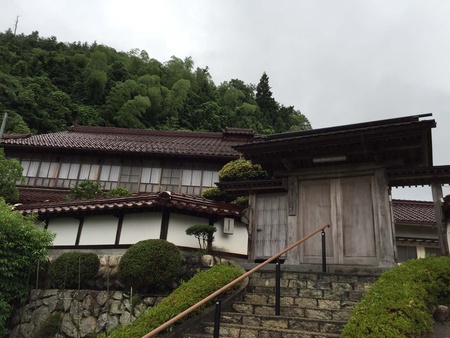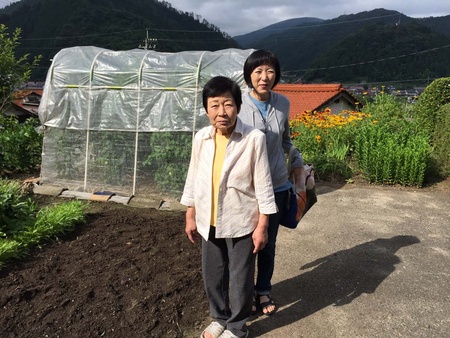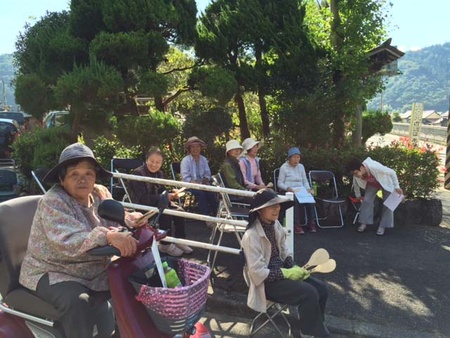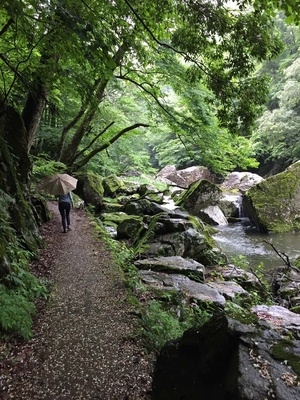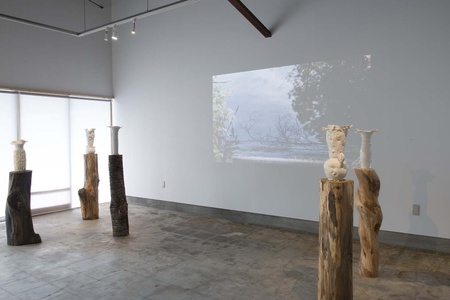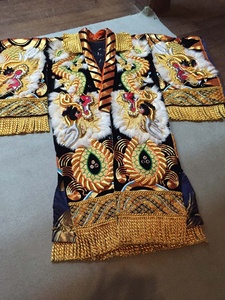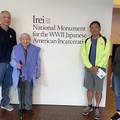On August 5, 1945, a cataclysmic event forever turned Hiroshima into the site of an international nightmare—much like the World Trade Center will always be linked to 9/11. On his recent historic trip to the Hiroshima Peace Memorial on April 11, 2016, Secretary of State John Kerry called the experience “gut-wrenching” and added, “Everyone in the world should see and feel the power of this memorial.”
If Kerry succeeds in convincing President Obama to become the first sitting U.S. President to visit Hiroshima later in the year, the city that was decimated by the world’s first nuclear bomb will once again be featured prominently in the news. Such a trip may be stymied by controversy surrounding the political repercussions of a long overdue encounter. Still, the emotional effect on anyone who visits is undeniable: it’s impossible to leave without feeling deeply moved and committed to the ongoing struggle for peace and nuclear disarmament.
In spite of the overwhelming power of a visit to the Hiroshima Peace Memorial Park, it is just one of many of Hiroshima’s attractions—tragic, poignant, and sweet—that continue to make the city a mandatory stop for travelers to Japan. For example, worshipping at the shrine in the sea on the island of Miyajima or eating Hiroshima-style okonomiyaki are among the city’s many other lures that make it even more worth the five-hour train trip from Tokyo.
I toured Hiroshima with the guidance of my friend Minako Mizuno who recently moved back home to live with her mother after nearly thirty years in the U.S. When I arrived at the busy Hiroshima Train Station, she somehow managed to find me among the busy crowd to escort me on a tour of the bombsite and accompanying museum. It was difficult to imagine a place being able to survive such devastation as we walked around afterward in this sprawling metropolis, complete with large hotels, busy shopping centers, and state-of-the-art mass transportation.
After a long day of sightseeing, we caught a bus to her native town—an hour’s ride away but worlds apart from the once devastated city. A small region in the Yamagata District only fifty miles from Hiroshima, the town of Akiota is a place few American tourists know about—despite recent efforts by the local tourist bureau to attract foreigners. Tourist brochures accurately paint Akiota as a vibrant place with miles of verdant rice paddies, towering tree-covered bluffs, and a stunning river gorge. The tiny but charming town reported a 2012 population of only 7,463 people compared to more than 1.1 million in Hiroshima itself and 14 million in Tokyo, with a population density of a mere 22 people per square kilometer next to 6,000 people occupying the same area in Tokyo. On top of everything, Akiota’s population is in decline, much like the rest of Japan, as many of the elderly are dying off.
When we arrived at the deserted Akiota bus depot, we immediately jumped into her tiny Suzuki, a perfect fit for the town’s narrow two-lane roads. It was dark by the time we drove the short distance to her mother’s house but not dim enough to obscure my first “aha” moment. Here was a century-old traditional Japanese-style wooden home unlike anything I’d ever stayed in. Built around 1850, the historic home has housed six generations of her family, including Minako’s grandfather who once served as the town’s mayor. I had known Minako wanted to return to Japan to help care for her mother in the family home, but in that moment I suddenly realized what was really at stake. Spread on a hillside overlooking acres of abundant greenery and rice fields was the family bochi (cemetery). As I stared out at the rich scenery, I knew I was in for the experience of a lifetime as I began a journey that seemed much like traveling back to my ancestral roots.
Just before leaving for Japan, I had learned that our family’s origin on my father’s side was a small island in Yamaguchi-ken, called Agenoshō. I was told it was near Hiroshima, but since it was one of many small islands off the coast of southern Japan, no one seemed to know where it was or how to get there. Never having traveled beyond the cities of Tokyo and Kyoto, I could only imagine what a Japanese rural town was like. On my first morning in Akiota, as I awoke on a futon (comforter) surrounded by shoji screens, I imagined this would be the closest I would ever come to experiencing a place similar to where my obaasan (grandmother) grew up.
I had already noticed a striking similarity between Minako’s okaasan (mother) and my long deceased obaasan, who we lovingly called Bachan. I knew little about Bachan’s hometown except that it was a small fishing village where—judging from Bachan’s dark and heavily wrinkled skin and her love of growing things—the sun was intense as she toiled in the fields. Even after coming to the mainland U.S., she still worked from sun-up to sundown planting and nurturing homegrown vegetables in our backyard. She took pride in showing off the enormous daikon that grew almost to the size of watermelons—enough to supply our family of nine and all our relatives with tsukemono (pickled daikon) for years.
Like Bachan, Minako’s mother, Sachie Dokan, smiled from ear to ear as she showed off the vegetables she grew in the large vegetable gardens cantilevered around her house. Our daily meals consisted of a mountain of fresh onions, squash, and eggplant straight from her garden. What we ate that she didn’t grow were vegetables exchanged with neighbors and fresh fish caught and sold in a tiny fish market in town. The highlight of every meal was, of course, rice. Neighboring rice paddies produced different varieties of the Japanese staple, and the taste and texture was unlike anything in America.
Our first full day in Akiota was spent meeting and talking with some of the locals. Minako introduced me to Shinichiro Kimura who serves as one of the organizers of the Shiwai Marathon, a yearly event attracting people from all over Japan to run a tortuously hilly but stunningly beautiful race through the heart of Akiota. Not your standard marathon of 26.2 miles, the Shiwai Marathon is what we normally call an ultramarathon covering a massive distance of 88 or 100 kilometers (approximately 55 or 62 miles). Kimura-san explained there are hundreds of standard distance marathons in Japan, a country that takes running very seriously, but only a handful of ultramarathons. Akiota townspeople chose to take on the challenging job of hosting an ultramarathon as a way of showing off the beauty that lay just outside their doors. A sea of green atop towering mountains amid stunning views await those brave and hardy enough to take on the challenging course. The entire town turns out for this exciting event as young and old volunteers assist runners along the way. Set this year for September 18, 2016, the Shiwai Marathon welcomes all comers to experience a running event unlike any other in all of Japan.
Luckily, I got a taste of the beauty of Akiota without having to run an ultramarathon when Minako took me to a trail in a breathtakingly beautiful area with waterfalls and a lake amidst tall trees and lush plant life made abundant by heavy winter snow. During winter, the area becomes a popular ski resort, but when summer tourist season resumes, a scenic boat ride takes visitors on an idyllic ride from the Sandandakyo Gorge to Hijiri Lake. Unfortunately, we hit the trail just as rain began to fall, but we were still able to catch the spectacular three-steps waterfall (Sandandaki) for which the area is known.
We headed back to dry ground to see the art studio that was occupying most of Minako’s time in Japan. When she first told me she was going to move back to her home, the words of the Thomas Wolfe book, You Can’t Go Home Again, came to mind. She had lived an art-filled life for more than twenty years with her ceramicist husband in a beautiful Los Angeles studio home, complete with a giant kiln. Moving back to Akiota meant living in a small town with likely more rice farmers than art enthusiasts, but her devotion to art prevailed. At the time I visited, she was about to open her own art gallery (mmproject), featuring her husband Mineo’s most recent work as its first exhibition. His rough wood stands holding delicate and intricate porcelain pieces as well as video installations with water and nature as the theme would no doubt resonate in an area that prides itself on its closeness to nature. Minako has her eye on the future and hopes the gallery will attract burgeoning artists to stay and live. Surrounded by mountains, water, and natural beauty, Akiota provides the perfect setting for creative talent.
Already, I was feeling like I was getting a taste of Japanese life that I’d never get on your standard Rick Steves tour, but that evening I was in for another treat. Minako had arranged with a friend for us to watch a rehearsal of a Kagura performance. Most visitors to Japan have heard about the arts of kabuki and butoh, but Kagura is one with which few people outside of Hiroshima might be familiar. A traditional art form unique to this area, it is a theatrical program performed by a troupe whose skill and professionalism belies the fact that they rehearse and perform solely in their spare time. Dating back to feudal Shinto deities, Kagura is usually performed on special stages in and around Shinto temples. Intricately embroidered handmade costumes as well as colorful masks add to the elegant theatricality of every production, with high energy the cornerstone of every performance. As I watched the rehearsal on my knees, talked to the performers afterward, and even got to try on one of their weighty costumes, I was overwhelmed by the performers’ generosity, vitality, and dedication to their art.
When I left Akiota, I felt as if I was leaving Shangri-La. This earthly paradise surrounded by misty mountains and lush fields was a gift from a friend appropriately named Mizuno—mizu meaning water, or the gift of life. Minako is eager to share her beautiful town to keep it from dying along with the elderly citizens who’ve lived there a lifetime. Lucky for all of us, it’s only an hour from Hiroshima.
© 2016 Sharon Yamato


